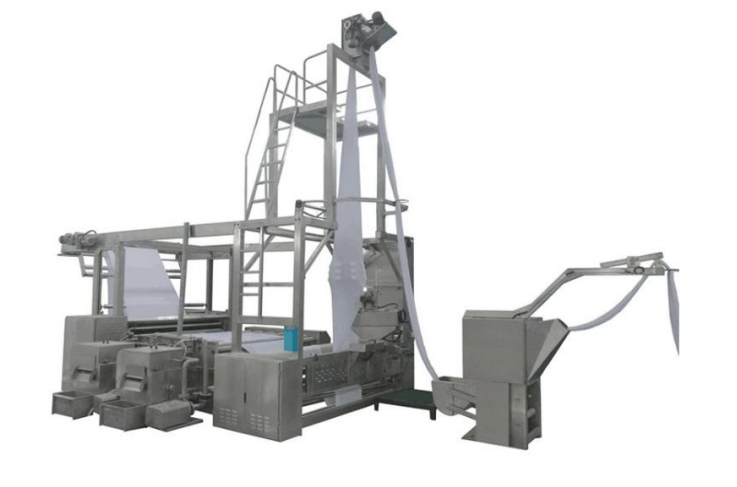Knitted fabrics are widely used in our daily life.
The main products are: knitted jersey, cotton wool, ribbed fabric, mesh fabric, polar fleece, air layer, polyester cover, terry cloth, brushed cloth, cut flannel, artificial fur, etc. There are many mixed variation woven fabrics. Methods such as: plain rib change organization, jacquard organization, tuck organization, plated yarn organization, pad organization, terry change organization, etc. Due to the different needle arrangement rules of the weaving method, the same product will also have many changes, such as: mesh cloth has small mesh, pearl mesh, pineapple grid, waffle and so on.
The specific production process is as follows:
There are four main steps in the production of knitted fabrics: spinning, weaving, dyeing and finishing.
1. Spinning: the process of processing all kinds of woven fibers into yarns.
2. Weaving: a fabric formed by knitting needles and other looping machines to form loops from yarns, and the loops are strung together at one time.
3. Dyeing: The process of coloring the fiber material with dyes or pigments and making it with a certain fastness.
4. Reconstruction: Make refers to the physical and chemical processing to improve the appearance and internal quality of the fabric, improve the wearing performance of the fabric or give it special functions.
Usually knitted fabrics are knitting by a circular knitting machine, and the knitted fabrics from the circular knitting machine are tubular fabric, so another machine called a tubular fabric slitting machine is used at this time. The tubular fabric slitting machine will make the tubular fabric become the open width fabric, then these open width fabric can be delivery to the next process.
Advantages of knitted fabrics:
The weaving characteristics of knitted fabrics make the coils of the fabrics have a lot of expansion and contraction space, so the stretchability and elasticity of the fabrics are very good, and the fabrics can be worn without restricting human activities (such as jumping and bending, etc.), which is a production movement. The preferred fabric for clothing.
The raw materials for weaving are natural fibers or some fluffy chemical fibers. Their yarn twist is low, and the fabric is loose and porous. This feature greatly reduces the friction between the clothes and the skin, and the fabric is very soft and comfortable. Suitable as a raw material for intimate clothing.
The knitted fabric has an air pocket structure inside, and the natural fiber itself has a certain moisture absorption and breathability, so the knitted fabric is very breathable and cool. Now a large part of the summer clothes on the market are made of knitted fabrics.
As mentioned above, knitted fabrics have excellent stretchability, so the fabrics can automatically recover after being stretched by external forces and are not easy to leave wrinkles. If it is a chemical fiber knitted fabric, it is easy to dry after washing.

Disadvantages of knitted fabrics:
Knitted fabrics are prone to fluff or pilling after long-term wear or washing, and the fabric structure is relatively loose, which is easy to wear and shorten the service life of the clothing. The size of the fabric is not stable, and if it is a natural fiber knitted fabric, it is likely to shrink.
SUNTECH have over 45 years experience in textile machine manufacture field, so we are highly welcome the fabric manufactures come to ask the questions and we will be very gald to provide the most professional & suitable solution.
If there have any interest about the fabric slitting machine for sale price,
welcome contact with us by sales@suntech-machinery.com
Or you can visit our website: https://www.suntech-machine.com/
By the way, there is also non woven fabric slitting machine at SUNTECH.




